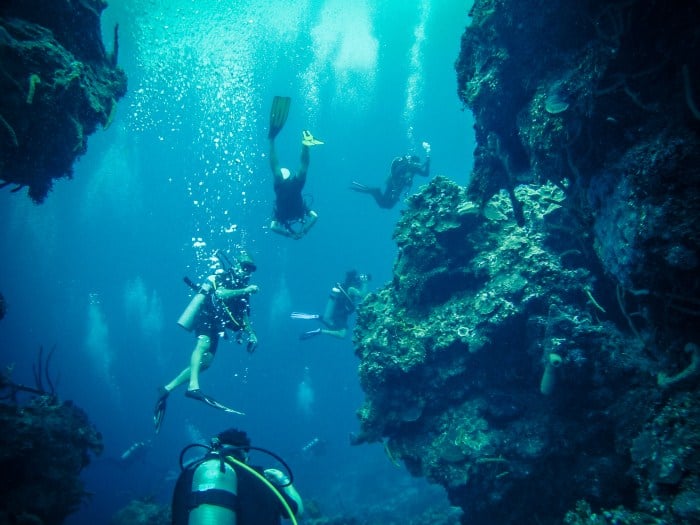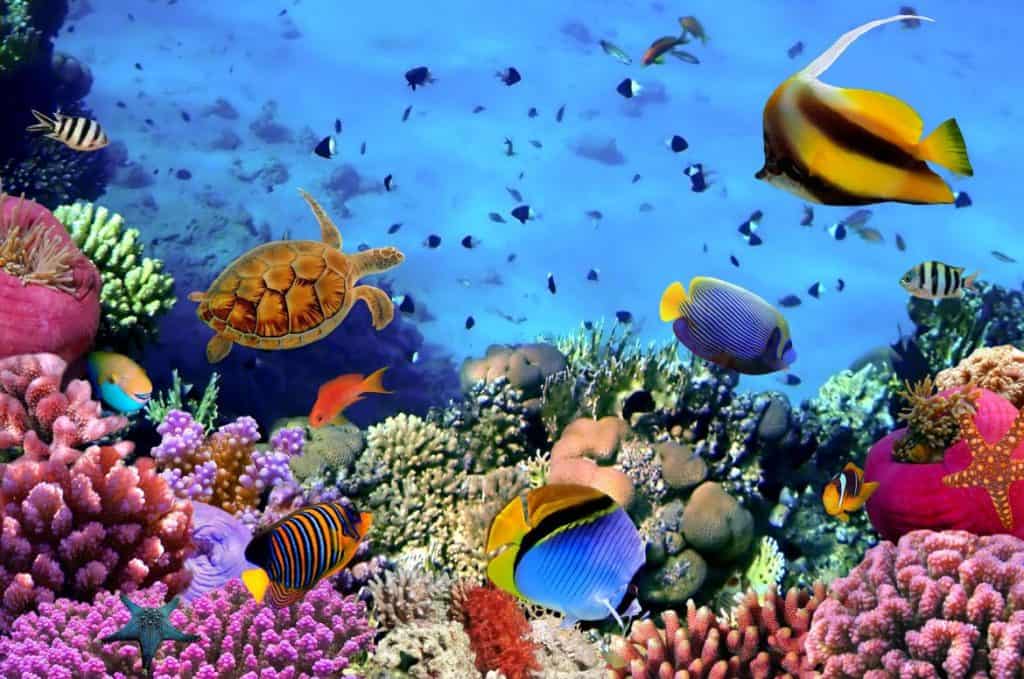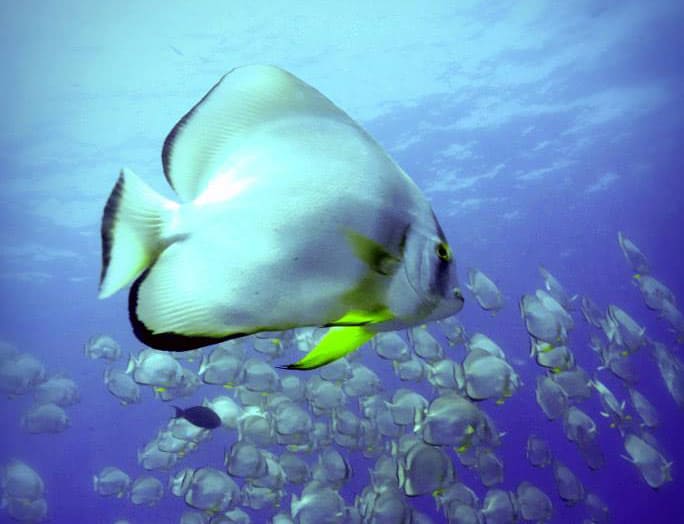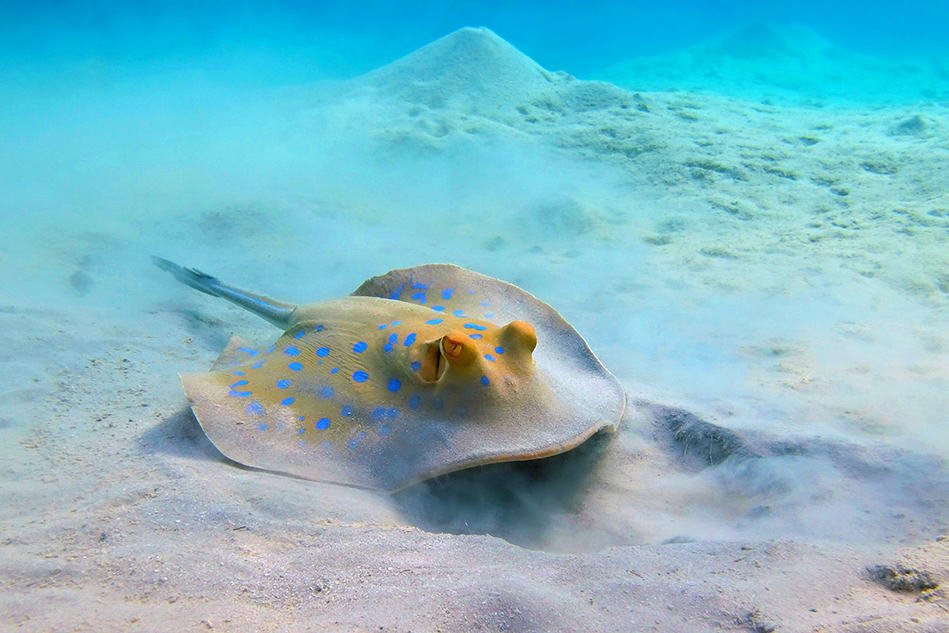For everybody returning or arranging an excursion to Cozumel diving is the magnet that pulls them to this lavish Mexican island.
Some portion of the Mesoamerican Barrier Reef, which is the second biggest on the planet, Cozumel is without a doubt the best spot to dive in the Riviera Maya.
Unending permeability, monstrous coral squares stacked on the head of one another, making a labyrinth of swim-throughs, sensational dividers, and various types of ocean turtles, nurture sharks and beams as you float along probably the most beneficial and most lovely coral reefs on the planet.
The absolute best scuba diving Cozumel brings to the table is on the western side of the island where it is isolated from the territory by a genuinely restricted and profound channel, which pipes the maritime supplement rich water.
This has fed the development of transcending coral arrangements along the coast and pulls in a great assortment of marine life – from dolphins to large scale life, you will see tropical fish of every kind imaginable while investigating natural hollows ornated with energetically hued wipes and thick backwoods of gorgonian fans. The territory is ensured and part of the Marine Park of Cozumel.
Cozumel diving is reasonable for all experience levels. Within excess of 40 distinctive dive locales to looked over, tenderfoots will set out toward a simple and agreeable float, while propelled divers can appreciate a quick ride on the flows at the more profound dive spots in the South.
The reef of Cozumel is home to the astounding Santa Rosa Wall, Palancar Reef, Colombia, and Punta Dalila, which constantly rank top on the rundown of best dive locales on the planet.
Fast FACTS to the scuba diving Cozumel conditions
10 km (six miles) off the bank of Mexico’s Yucatán Peninsula lies Cozumel, the “Island of the Swallows.” Barely 50 x 16 km in size, this modest island has become a famous scuba diving goal.
Cozumel has all the elements for an extraordinary dive escape – inviting local people, great food, vivacious nightspots, transcending coral arrangements, warm water, incredible submerged permeability, and white sandy seashores.
Cozumel is renowned among the diving network for its lavish dividers and high-voltage floats. The reef framework around the island is a piece of the Mesoamerican reef framework and is secured by the Cozumel Reefs National Marine Park.
Accordingly, it is amazingly solid for a Caribbean reef and is home to 26 coral species and in excess of 500 types of fish.
Cozumel is reasonable for all degrees of diver from tenderfoots to Tec divers. Specifically, Cozumel is now positioned as one of the best ten spots for cutting edge diving. This is because of the profound dividers and permeability that require additional carefulness.
Diving in Cozumel can be finished by speedboat or from shore, contingent upon your inclination.
What is the best time of year to go to Cozumel?
It’s conceivable to visit Cozumel consistently. For uncrowded locales, book among May and November. For bull shark sightings, think about November to March.
DECEMBER TO APRIL
There is no terrible opportunity to dive in Cozumel. Indeed, the water temperatures stay consistent all year and cool just somewhat throughout the winter months, which means it’s conceivable to dive around 300 days of the year.
December to April is viewed as the best an ideal opportunity to visit Mexico and in this manner is the most mainstream time to visit Cozumel.
Since the winter months establish high season, you should make a point to book as right on time as conceivable so as to make sure about the best rate.
November to March specifically are the greatest months for bull shark sightings in Playa del Carmen. By and large, water temperatures differ somewhere in the range of 78 and 82ºF (25 and 28ºC) in Cancun.
MAY TO NOVEMBER
May to September brings warm waters, uncrowded dive destinations and by and large quiet conditions. This is the best an ideal opportunity to dive Cozumel in the event that you incline toward hotter conditions.
Likewise note that diving in the Caribbean is conceivable all year. Just watch out for the figure throughout the mid year and late-summer. To really sweeten the deal, the mid year months are low season all through Mexico.
As of now, you’ll locate the best arrangements on diving and convenience. On the off chance that you appreciate uncrowded, Caribbean dive locales, travel to Mexico among May and September.
Marine life
As in each coral reef, you will discover various occupants at various spots and profundities, however here is the thing that you can hope to see on your dives: Dense coral arrangements entwined with wipes – numerous gorgonians, cerebrum, lettuce and sheet corals.
Rope, barrel, cylinder, container and encrusting wipes in splendid orange, purple and pink.
The tropical fish go from sovereign, French and dim angelfish, which you will for the most part find two by two to tutoring snorts and snappers behind each shade. Bright triggerfish, parrotfish and filefish gather in the shallow pieces of the reef.
Occupant extraordinary barracuda, green moray eels and groupers are a typical sight and on the off chance that you look close, odds are high that you will discover pipehorses, slugs, bolt crabs and numerous little shrimp.
Around evening time lobsters (Caribbean prickly lobster, spotted lobster, Spanish lobster) and channel sticking crabs come out to take care of.
You are additionally prone to experience chasing squid and octopuses. One of the features in Cozumel is the breathtaking toadfish, which is an endemic types of the region. Search for little gaps dove in the sand under the stones.
You can see hawksbill, green and loggerhead turtles on pretty much every dive just as medical caretaker sharks laying on the sandy base, for the most part under overhands to shield themselves from the current.
Dark tip sharks are a typical sight. Bull sharks don’t visit the waters around Cozumel, however visit the mainland coasts at Playa del Carmen during their mating season.
In winter is the relocation of the spotted bird beams and you can see them in enormous numbers in the months among November and April.
Geography scuba diving Cozumel
The reef structure around Cozumel resembles nothing you may have seen previously. The ocean bed comprises of white sand patios, at the edge of which coral reefs develop, framing a few lines corresponding to the shore.
With profundity, the coral developments get greater, taller and denser, shaping some noteworthy swim-throughs.
On the wester side of the island, where the most well known dive destinations are, the drop-off is at around 20-30m (65-100ft) and arrives at a profundity of 500m (1600ft).
Water temperature Cozumel diving
The ocean temperatures around Cozumel shift from 26°C (79°F) in winter to 29°C (84°F) in summer, making it an ideal diving goal whenever of the year.
Perceivability
With clear Caribbean water continually streaming close by Cozumel, the perceivability is amazing, coming to over 40m (130ft), so set yourself up for some sensational investigation.
On the off chance that you are into submerged photography, you will need to take your wide point focal point along!
Flows
The flows stream determinedly towards the north, after the reef and are commonly more grounded at the southern purpose of the island.
The speed will in general change day by day and even over the span of the day. The current, in any case, is completely reasonable and permits you to cover a greater piece of the reef on a solitary dive – you simply drop and appreciate the ride above what is by all accounts an interminable reef!
Dive locales
Cozumel positions high on all the rundown of the best dive locales on the planet and that is on the grounds that each dive around the island is just fabulous. Probably the most well known spots are Palancar Reef, Colombia, Santa Rosa Wall, Punta Dalila, and Punta Sur.
Water passage and exit
In spite of the quick flows, negative passage isn’t the standard. It is significant, nonetheless, that divers get in the water rapidly consistently and plummet together.
Since the bearing of the current is steady and the reef is for all intents and purposes continuous, even with solid current you will simply float starting with one dive site then onto the next.
Negative water section is required at only a couple of the dive locales, for instance at Cathedral and Devil’s Throat, where you would prefer not to miss the cave passages.
In any case, and, after its all said and done, a decent commander will realize the ideal drop off contingent upon the current with the goal that you don’t have to worry.
As you float along, the pontoon will follow your air pockets at the surface. Since there are many dive vessels watching the Cozumel zone, conveying a SMB before rising is compulsory.
One float is sufficient for the entire gathering and your guide will convey it. When you surface, ensure you remain near the SMB until your pontoon gets you.
Our top security tip is to convey your own surface marker on the off chance that you (and your pal) get isolated from the gathering.
Ensure you show it to the commander and furthermore know the name of the pontoon you are diving with and the radio channel.
That way, any place you climb and your dive vessel isn’t in see, you can solicit any from different skippers to contact your pontoon and give your area.
Where is Isla Cozumel and how to arrive?
Cozumel is the greatest Mexican island in the Caribbean. It lays simply inverse Playa del Carmen, which is on the mainland coastline, directly among Cancún and Tulum.
There are a few choices of getting to Cozumel in the event that you are as of now in the Riviera Maya. From Cancún you can take a 20-minute local trip with MAYAir.
Then again, you can take a transport or taxi/move from Cancún or Tulum to Playa del Carmen, where you can get a 45-min ship.
There are two organizations, running excursions simultaneously consistently. You can purchase your tickets at the port just before flight. There’s nothing you can foul up there.
On the other hand, you can fly straightforwardly to the worldwide air terminal on Cozumel, which is situated on the edge of San Miguel, the main town and occupied spot on the island.
As a result of the vicinity to the terrain, numerous individuals consider scuba diving in Cozumel from Playa del Carmen or contrast the dive destinations with those of Cancun.
The reefs simply off the island unquestionably compensate for the best diving in the Riviera Maya so you will lament in the event that you don’t spend a piece of your diving occasion on Cozumel.
Would you be able to go scuba diving in Cozumel without confirmation?
Indeed! An incredible aspect regarding diving in Cozumel is that it is reasonable for all degrees of experience. You can pursue a stunning Discover Scuba Diving encounter and investigate the dynamic shallow reefs simply off the coast.
You will begin from shore and practice some essential aptitudes and get acquainted with your gear before getting a charge out of the genuine dive.
Swimming IN COZUMEL
Swimming is fundamental to any travel in Cozumel. From shore, you’ll have the option to get to the island’s rich dividers and reefs - simply be aware of the solid flows.
Nearby aides will be glad to help you with a swimming campaign by vessel into the Cozumel Reefs National Marine Park. There are likewise outings to the remote ocean for swimming with sailfish that may intrigue the more audacious divers.
BEST DIVE SITES IN COZUMEL
Punta Sur Reef – This is an entrancing, ethereal dive comprising of a profound divider with natural hollows and gaps.
The properly qualified may enter one of the bigger cave frameworks and tail it down a sand chute to 27 m/90 ft where there’s a mind boggling arrangement of coral passages and caves that are totally overflowing with life.
The Devil’s Throat – This site is best appreciated with an accomplished neighborhood divemaster. The more profound dividers have whip corals spiraling out into the profundities, and enormous dark corals.
There are likewise little, brilliantly shaded gorgonian ocean fans and ocean whips, including the fiend’s ocean whip.
Palancar Garden – Divers of all levels will appreciate the slight-to-direct current that conveys them along while investigating the many finger coral arrangements here.
This strip reef is around 20 m/66 ft wide and analyzed by numerous crevices and natural hollows. Inside the many protected zones, divers can spot enormous smokestack wipes loosening up from the reef and dark coral in the more profound regions.
Fish, for example, adolescent yellow head wrasse stow away in the profound yellow cylinders around evening time for insurance and sightings of butterflyfish, angelfish, parrotfish and damselfish are visit.
Santa Clause Rosa Wall – This is a high voltage float dive along a sheer divider. The divider starts at around 15 m/50 ft and the current conveys divers past edges, overhangs, enormous wipes and fire coral. Divers routinely experience enormous pelagic fish, turtles and spotted hawk beams.
Columbia Wall – This is a generally far off site which divers as often as possible offer with hawk beams, turtles and enormous barracuda.
A sound coral reef crowns a lofty drop off, and huge coral apexes rise 15 m/50 ft from the base. Attendant sharks sneak the reefs and dividers, which appear to drop straight down to the unbounded profundities.






